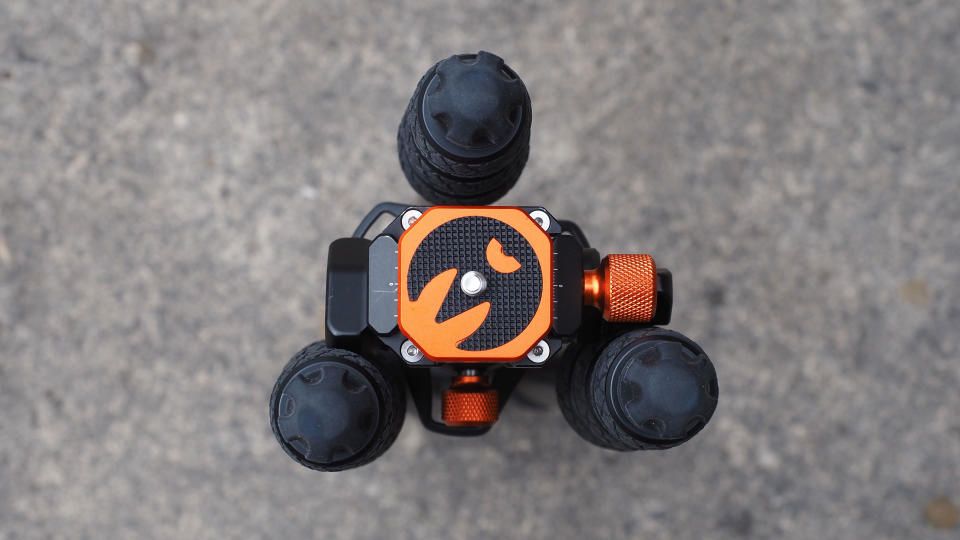3 Legged Thing AirHed Trinity review
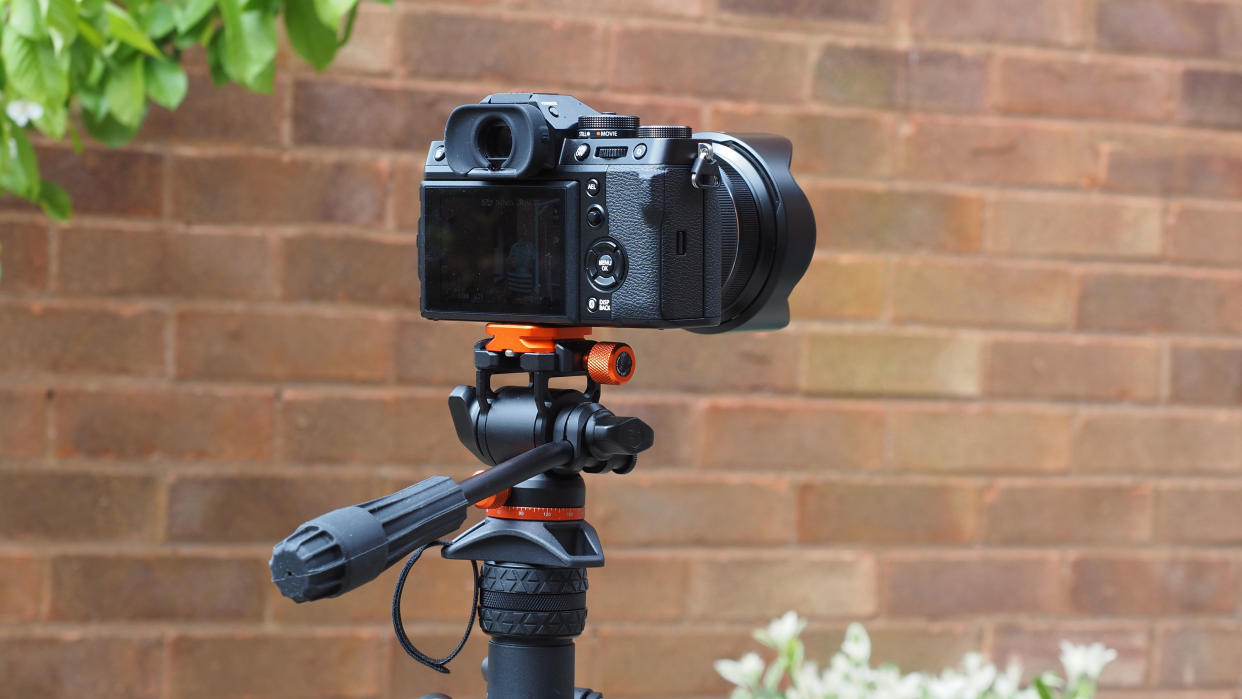
It seems like ball heads are the new norm for tripods. Once, three-way heads were just as common, but these are bigger, heavier and slower to use. Ball heads, especially those with separate panning axes, are quicker to set up and more compact.
But there are still lots of situations when separate axes are better, and shooting video is one of them. If you’re carrying out any kind of camera movement, you need a smooth, level panning action, and for vertical pans you need a separate tilt axis – even the best ball heads cannot do a controlled vertical tilt.
So while old-school three-way heads may have lost popularity with stills photographers, they have become much more relevant again with the new content creation industry.
Two things separate traditional three-way heads from modern video heads, however. First, like a lot of other video heads, the AirHed Trinity, does not offer a 90-degree camera rotation. It’s actually a two-way pan and tilt head.
This has not traditionally been a problem for video because who shoots video vertically? Well, a whole new generation of social content creators does, so if you need vertical video and your camera doesn’t support it while it’s mounted horizontally, the AirHed Trinity could pose a problem. This is something to take into account when looking for the best video tripods.
The other distinguishing factor with video heads is they use fluid damping for smoother, more controlled camera movements. Some will also come with internal counterbalance mechanisms and longer camera plates to balance up the camera so that it stays still even with the tilt axis unlocked.
So how well does the AirHed Trinity handle the needs of video shooters and hybrid context creators? Let’s see.
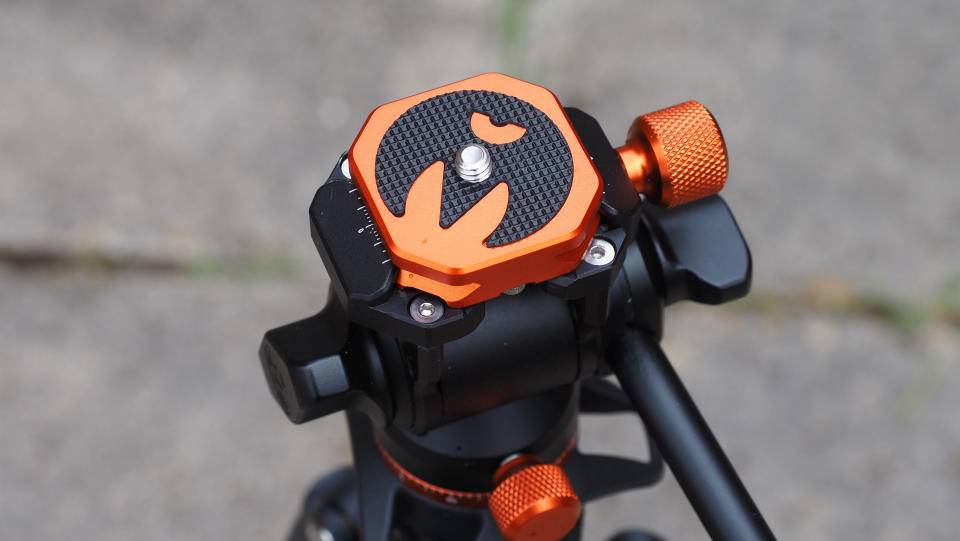
AirHed Trinity: Specifications
AirHed Trinity: Build and handling
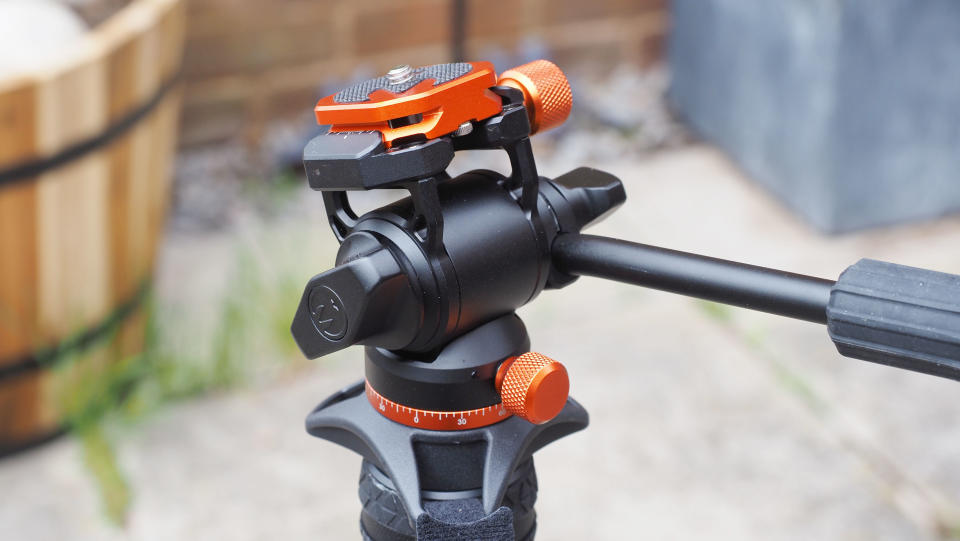
3 Legged Thing camera supports always have first class finish and operational ‘feel’, and the AirHed Trinity maintains that standard. It comes in the company’s trademark ‘Lava’ finish (metallic orange) or a more sober ‘Midnight’ (black). We tested the Lava version.
It’s extremely compact with the panning handled detached, and takes up no more room than a regular AirHed Neo or Pro head, so if you’re using it with the Punks 2.0 Billy, for example, you can fold up the legs around the center column for travel and storage in just the same way.
You can also operate the head perfectly well without the handle as it’s not used for locking the tilt axis. You will need to attach the handle for smooth video pans, though, and that does maybe take a few seconds longer than it should because you have to screw a safety locking nut into the end to make sure it doesn’t slide out accidentally (it does clamp in place anyway, so you could skip this if you’re in a hurry, even if it’s not recommended).
The pan axis is locked with a knurled knob on the base of the head, and there are knobs either side of the tilt axis. One locks the tilt axis, the other locks the panning arm at your chosen position.
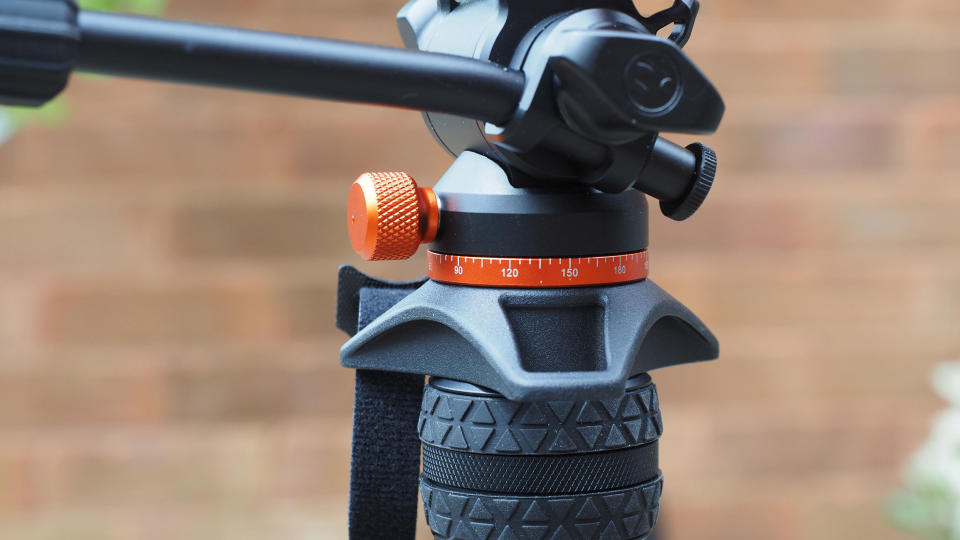
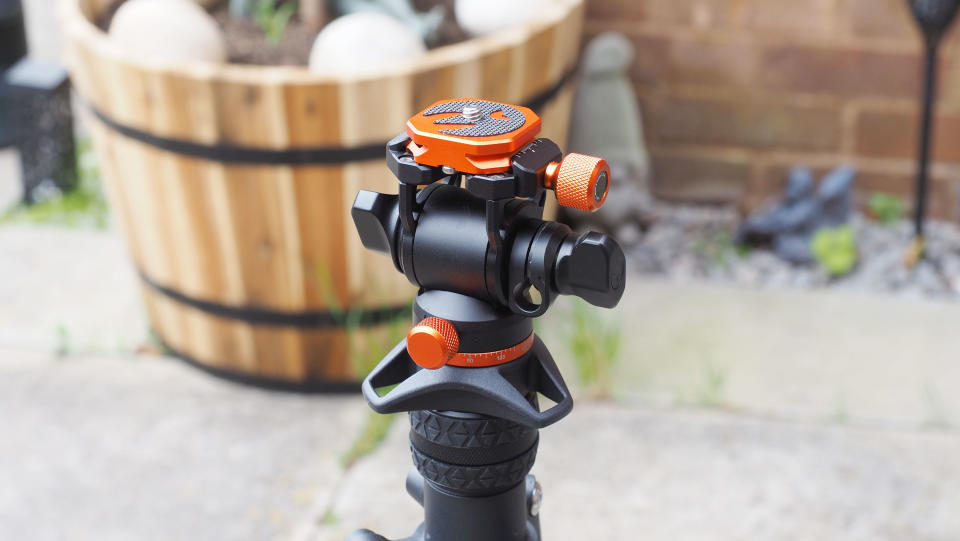
The AirHed Trinity comes with a compact square Arca Swiss compatible QR plate. This is fine as far as it goes and it certainly keeps the size down, though if you’re shooting with larger lenses, you might want to consider one of 3 Legged Thing’s new Ultra plates to offer some fore-and-aft camera movement to balance any nose-heaviness.
There’s no spirit level on the AirHed Trinity but arguably it doesn’t need one. With no ball head to add unwanted tilt, you can use the virtual horizon on the back of the camera. If that’s, level the tripod base is level – and you can always do a quick practice pan to check.
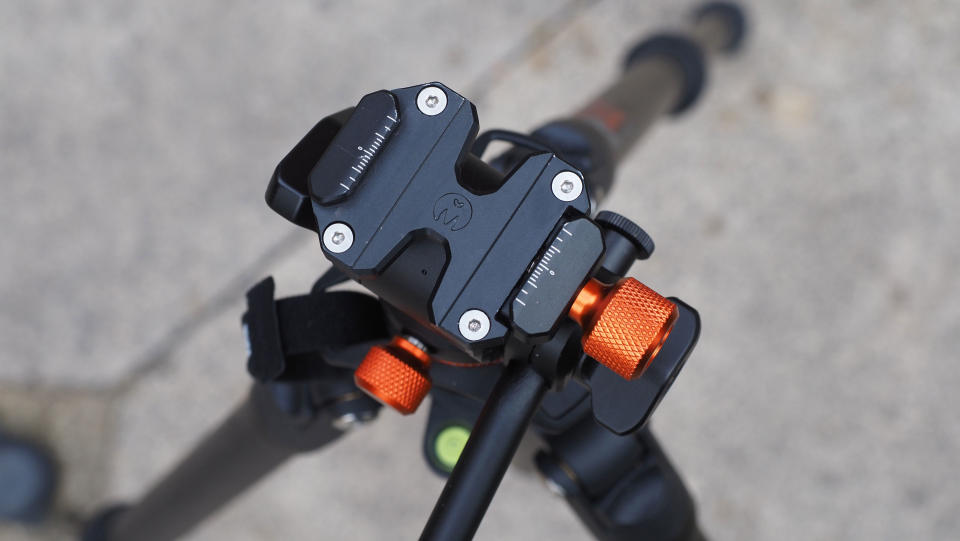
If you need to shoot vertical video, though, you could have a problem. Smartphones will be fine because you’ll be using a clamp that can probably mount the phone horizontally and vertically, but you can’t use an L-bracket with regular cameras without losing the tilt movement. That’s because the QR plate slides in front to back, not side to side, and when you do this the tilt axis is at 90 degrees to where it needs to be.
It's not the end of the world. One quick and dirty solution would be to screw a regular ball head like the AirHed Pro on to the Trinity's QR plate, and use that to rotate the camera to a vertical orientation.
AirHed Trinity: Performance

The pan axis is very smooth indeed. With the locking knob loosened, there’s just the right of ‘drag’ for panning movements. Pro-level video heads will sometimes offer adjustable drag (a bit like friction control on ball heads), but they cost a lot more money, and for average video shooters and content creators this is fine.
The tilt axis is slightly different. It too is very smooth, but it has a spring-loaded feel that wants to return the camera to a level position. That’s fine when you’re shooting with a lightweight setup, like a Lumix G100D with 12-32mm lens, but heavier setups like the Sony A7C II and FE 16-25mm f/2.8 lens we’ve been testing at the same time will be very nose-heavy. Here, the tilt action is still very smooth and controllable, but the camera will want to tilt forwards.
You could probably get round this by using a longer plate and balancing the camera a bit better, but the AirHed Trinity won’t offer the same kind of counterbalancing as a pro video head. It’s unreasonable to expect it to, and this is still a huge step up in operability compared to a regular tripod head.
Incidentally, the AirHed Trinity is also perfect as a monopod head. It gives you the adjustable tilt angle which you so often need for monopod shooting, without the annoying randomness of a ball head.
AirHed Trinity: Verdict
For such a compact head, the AirHed Trinity feels remarkably smooth and extremely well engineered too. It’s easily up to the job of mobile content creation, especially for those who need to travel light, but it’s equally useful as a monopod head or a support for spotting scopes or longer telephoto lenses – though watch out for that maximum 5kg payload capacity.
It’s a terrific lightweight video head for travel and compact travel tripods. You don’t have to pack it separately and attach it for each shoot, and it should fit in your travel tripod case as easily as a regular ball head. Purists may complain there’s no adjustable drag and counterbalance, but these are high-end features that not everyone needs and can hardly be expected at this price.
The one bugbear is the problem of shooting vertically. For regular horizontal video shooters and photographers, though, the AirHed Trinity is brilliant, offering smooth, controlled movement in a head small enough to fit a travel tripod.
